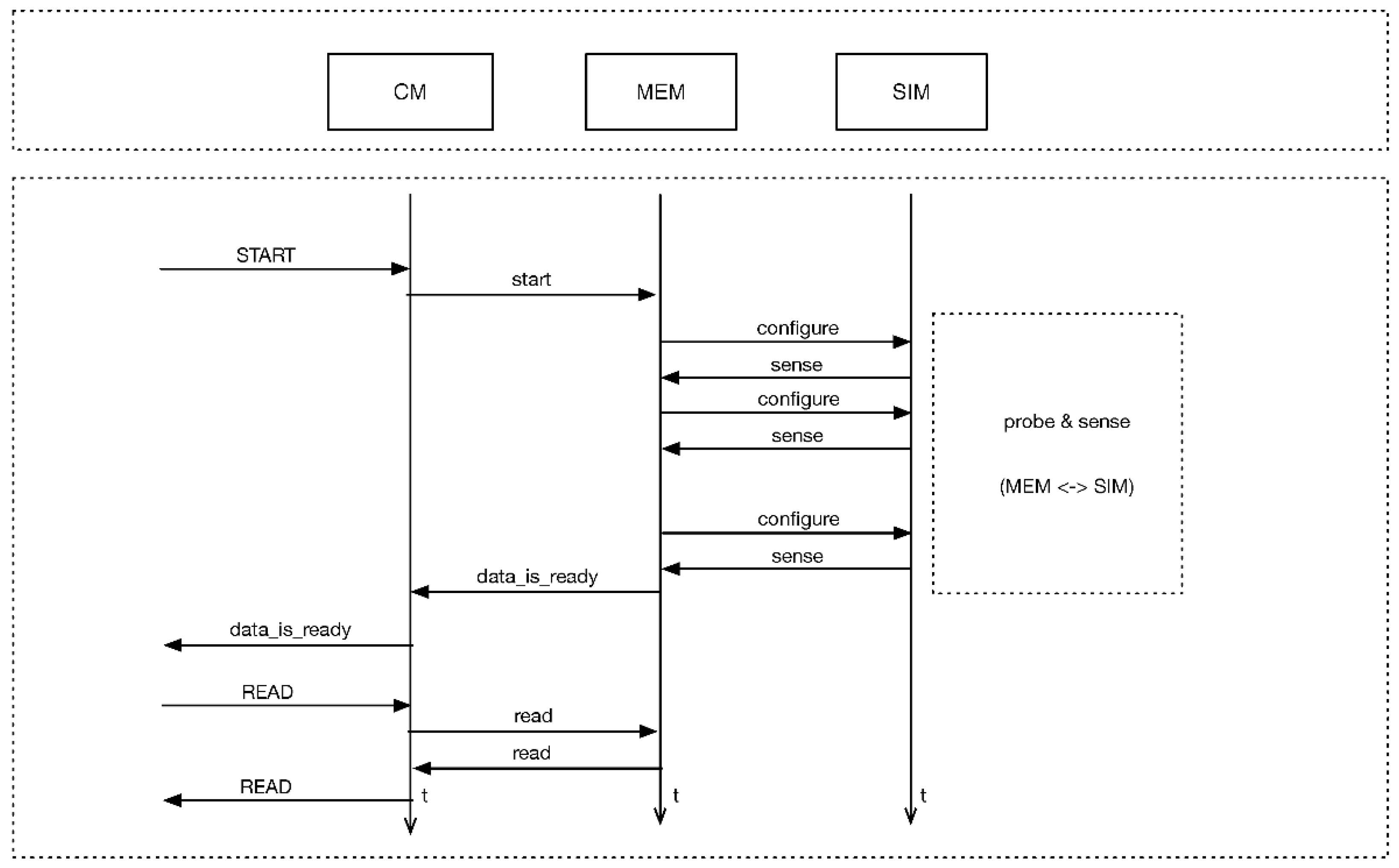An Open-Source Smart Sensor Architecture for Edge Computing in IoT Applications †
Abstract
:1. Introduction
2. Related Work
3. Smart Sensor Architecture
4. Smart Sensor with Analog Probing Transducer
5. Conclusions
Author Contributions
Conflicts of Interest
References
- Vollero, L.; Sabatini, M. Performance Assessment of BLE Nano BAN Micro-Infrastructures. In Proceedings of the 2017 IEEE 41st Annual Computer Software and Applications Conference (COMPSAC), Turin, Italy, 4–8 July 2017; Volume 2, pp. 300–303. [Google Scholar]
- Sabatini, M.; Vollero, L. Available online: https://github.com/MarcoSaba/ArduinoSmartSensor (accessed on January 2018).
- Gunge, V.S.; Yalagi, P.S. Smart Home Automation: A Literature Review. Int. J. Comput. Appl. 2016, 6–10. [Google Scholar]
- Rouillard, J. The Pervasive Fridge. A smart computer system against uneaten food loss. In Proceedings of the Seventh International Conference on Systems (ICONS2012), Saint-Gilles, Réunion, 29 February–5 March 2012; pp. 135–140. [Google Scholar]
- Li, B.; Hathaipontaluk, P.; Luo, S. Intelligent oven in smart home environment. In Proceedings of the International Conference on Research Challenges in Computer Science, ICRCCS’09, Shanghai, China, 28–29 December 2009; pp. 247–250. [Google Scholar]
- Lu, J.; Sookoor, T.; Srinivasan, V.; Gao, G.; Holben, B.; Stankovic, J.; Field, E.; Whitehouse, K. The smart thermostat: Using occupancy sensors to save energy in homes. In Proceedings of the 8th ACM Conference on Embedded Networked Sensor Systems, Zürich, Switzerland, 3–5 November 2010; pp. 211–224. [Google Scholar]
- Ruiz-Garcia, L.; Lunadei, L.; Barreiro, P.; Robla, I. A review of wireless sensor technologies and applications in agriculture and food industry: State of the art and current trends. Sensors 2009, 9, 4728–4750. [Google Scholar] [CrossRef] [PubMed]
- Drean, E.; Schacher, L.; Bauer, F.; Adolphe, D. A smart sensor for induced stress measurement in automotive textiles. J. Text. Inst. 2007, 98, 523–531. [Google Scholar] [CrossRef]
- Pantelopoulos, A.; Bourbakis, N.G. A survey on wearable sensor-based systems for health monitoring and prognosis. IEEE Trans. Syst. Man Cybern. Part C (Appl. Rev.) 2010, 40, 1–12. [Google Scholar] [CrossRef]
- Mnati, M.J.; Van den Bossche, A.; Chisab, R.F. A smart voltage and current monitoring system for three phase inverters using an android smartphone application. Sensors 2017, 17, 872. [Google Scholar] [CrossRef] [PubMed]
- Czaja, Z. An Implementation of a Compact Smart Resistive Sensor Based on a Microcontroller with an Internal ADC. Metrol. Meas. Syst. 2016, 23, 225–238. [Google Scholar] [CrossRef]
- Nhivekar, G.; Mudholker, R. Data logger and remote monitoring system for multiple parameter measurement applications. e-J. Sci. Technol. 2011, 6, 55–62. [Google Scholar]
- Mallick, B.; Patro, A.K. Heart rate monitoring system using fingertip through Arduino and processing software. Int. J. Sci. Eng. Technol. Res. (IJSETR) 2016, 5, 84–89. [Google Scholar]
- Cordelli, E.; Pennazza, G.; Sabatini, M.; Santonico, M.; Vollero, L. A Smart Sensor Architecture for eHealth Applications. In Proceedings of the 2018 IEEE 42nd Annual Computer Software and Applications Conference (COMPSAC), Tokyo, Japan, 23–27 July 2018; pp. 800–804. [Google Scholar]
- Santonico, M.; Frezzotti, E.; Incalzi, R.A.; Pedone, C.; Lelli, D.; Zompanti, A.; Grasso, S.; Pennazza, G. Non-invasive monitoring of lower-limb ulcers via exudate fingerprinting using BIONOTE. Sens. Actuators B Chem. 2016, 232, 68–74. [Google Scholar] [CrossRef]
- Profiling Arduino Code. Available online: https://www.dudley.nu/arduino_profiling/ (accessed on 5 January 2018).


Publisher’s Note: MDPI stays neutral with regard to jurisdictional claims in published maps and institutional affiliations. |
© 2018 by the authors. Licensee MDPI, Basel, Switzerland. This article is an open access article distributed under the terms and conditions of the Creative Commons Attribution (CC BY) license (https://creativecommons.org/licenses/by/4.0/).
Share and Cite
Cordelli, E.; Pennazza, G.; Sabatini, M.; Santonico, M.; Vollero, L. An Open-Source Smart Sensor Architecture for Edge Computing in IoT Applications. Proceedings 2018, 2, 955. https://doi.org/10.3390/proceedings2130955
Cordelli E, Pennazza G, Sabatini M, Santonico M, Vollero L. An Open-Source Smart Sensor Architecture for Edge Computing in IoT Applications. Proceedings. 2018; 2(13):955. https://doi.org/10.3390/proceedings2130955
Chicago/Turabian StyleCordelli, Ermanno, Giorgio Pennazza, Marco Sabatini, Marco Santonico, and Luca Vollero. 2018. "An Open-Source Smart Sensor Architecture for Edge Computing in IoT Applications" Proceedings 2, no. 13: 955. https://doi.org/10.3390/proceedings2130955
APA StyleCordelli, E., Pennazza, G., Sabatini, M., Santonico, M., & Vollero, L. (2018). An Open-Source Smart Sensor Architecture for Edge Computing in IoT Applications. Proceedings, 2(13), 955. https://doi.org/10.3390/proceedings2130955







